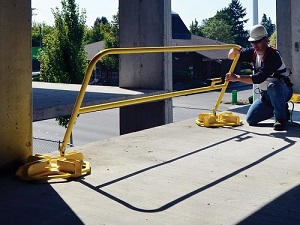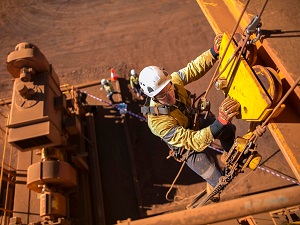Despite the emerging sophisticated and innovative fall protection systems, why are these fall-related injuries and fatalities still recurring? This article takes a deeper look into fall protection system failures that can be prevented.

Both same-level and multi-level falls are the second leading cause of work-related injuries and fatalities on most of America's job sites, following transportation-related accidents at work. Every year, approximately $70 billion is spent on compensation and the medical bills of American workers who suffered from fall injuries.
Despite the emerging sophisticated and innovative fall protection systems, why are these fall-related injuries and fatalities still recurring? Sometimes it is the failure to use any fall protection at all, but there are times when there is something wrong with the fall protection system itself. Here are some reasons why fall protection used to protect workers ends up being severely inadequate.

Improper Use of the Fall Protection Equipment Provided
Failing to choose the correct fall protection equipment for a particular job is what the industry's experts have dubbed as "the new type of fatality." In these cases workers may think they have adequate fall protection and end up with a false sense of security.
There are three pivotal factors that can complement an adequate fall protection safety system.
- Training on the fundamentals of the Personal Fall Protection Equipment (PFPE) provided, along with proper usage for the working environment and application.
- Compliance to the proper handling and safety standards of the PFPE.
- Regular Formal Inspections of the PFPE.
Workers should undergo proper training and follow the right equipment handling and usage. The management should also run regular checks and maintenance on every equipment, as well as ensure the correct installation of each of them with the right engineers.
Preventing the hazards of working at height begins with an in-depth comprehension of all the risks and the informed and proper deployment of PFPEs, alongside with the formal individualized, hands-on training and on point culture of safety practices.

Misconceptions on Horizontal Lifelines
Experts claim that with the increased usage of horizontal lifeline systems comes issues with training, installation, and maintenance, which many PFPE users often neglect.
Horizontal lifelines utilize a cable connected to two anchorage points at a similar level. Using this method of tying off allows a worker to move horizontally without changing anchorage points, allowing more freedom of movement that increases productivity.
While horizontal systems are more time-efficient than the standard lanyard harness systems, they require sturdier anchorage points. There’s a need to understand that a falling body can be heavier than what an anchorage point can hold up, even within a very short distance.
However, many workers think that they’ll be protected so long as they weigh around 200 lbs, and the rope is rated with 12,000 lbs of tensile strength—but, no. Anchorage points are more likely the weak point here.
Inadequate clearance is another misconception workers tend to have with horizontal lifelines. Workers may attempt to do the estimation themselves. However, this requires a qualified engineer’s thorough understanding of sag and deflection ratios, which definitely requires a lot of charts and formulas.

Lack of Engineered Fall Systems
Many companies are adopting the idea that engineering out and eliminating hazards is the best fall protection method. It’s the most inexpensive approach, as opposed to adding up the costs of re-training, re-inspection, re-certification, and re-application.
If the elimination of hazards isn’t possible, then conventional fall prevention and fall restraint systems would be a great alternative to prevent fall hazards. Conventional fall prevention approaches typically involve installing guardrails (visit the company website here), decking, walls, and catwalks.
In contrast, in a fall restraint approach, a worker wears fall protection equipment, which helps them do the work at a height without reaching the risky edge of a structure.
Putting fall hazards in mind during building planning and designing is another way to make use of engineering, alongside architecture. In Europe, for example, builders are now required to do anchorage points installations into new buildings, rather than opting to the more expensive retrofitting.
Considering that fall systems innovations are evolving, like any other diverse sectors, continual training for workers is recommended. There’s much room for confusion and mistakes when it comes to people protecting themselves at height, especially those without prior knowledge. The only solution to it is proper training and good application.

.jpg)

.jpg)